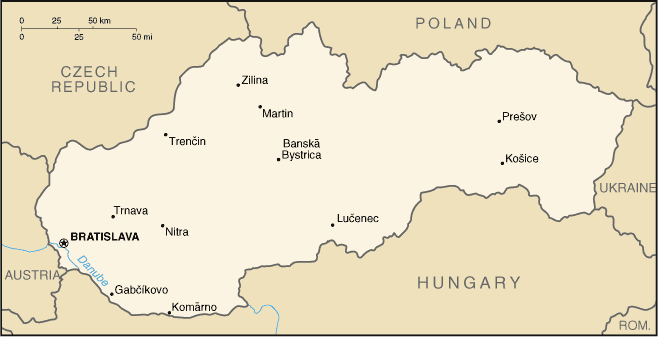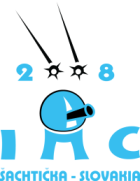Slovakia (short for Slovak Republic) is a landlocked country in Central
Europe with a population of over five million and an area of about 49,000
square kilometres (almost 19,000 square miles). The Slovak Republic borders
the Czech Republic and Austria to the west, Poland to the north, Ukraine to
the east and Hungary to the south. The largest city is its capital,
Bratislava. Slovakia is a member state of the European Union, NATO, OECD,
WTO, and other international organizations.

The Slovak landscape is noted primarily for its mountainous nature, with the
Carpathian Mountains extending across most of the northern half of the
country. Amongst these mountain ranges are the high peaks of the Tatra
mountains. To the north, close to the Polish border, are the High Tatras
which are a popular skiing destination and home to many scenic lakes and
valleys as well as the highest point in Slovakia, the Gerlachovský štít at
2,655 metres (8,711 ft). The Slovak climate lies between the temperate and
continental climate zones with relatively warm summers and cold, cloudy and
humid winters.
External links
http://en.wikipedia.org/wiki/Slovakia: Wikipedia page on Slovakia
http://en.wikipedia.org/wiki/Banská_Bystrica: Wikipedia page on Banská Bystrica
http://wikitravel.org/en/article/Slovakia: Wikitravel page on Slovakia
http://www.slovakia.travel: Official Slovakia Tourist Board website
Practical
http://en.wikipedia.org/wiki/Banská_Bystrica: Wikipedia page on Banská Bystrica
http://wikitravel.org/en/article/Slovakia: Wikitravel page on Slovakia
http://www.slovakia.travel: Official Slovakia Tourist Board website
Temperature: around 15-20 degrees Celsius (59-68 degrees Fahrenheit) in September during the day
Electricity: 230 V, 50 Hz, two pin plugs
Currency: Slovakia Koruny (SKK), 1 EUR buys 32 SKK, 1 USD buys 20 SKK (rates April 2008). Slovakia will adopt the Euro shortly after the IMC, so expect to see dual price tags. Lots of bigger shops, restaurants, fuel stations, etc. will already accept the Euro, but not all of them. ATMs generally accept most international cards (Maestro, Visa, Amex, ...).
Close
Electricity: 230 V, 50 Hz, two pin plugs
Currency: Slovakia Koruny (SKK), 1 EUR buys 32 SKK, 1 USD buys 20 SKK (rates April 2008). Slovakia will adopt the Euro shortly after the IMC, so expect to see dual price tags. Lots of bigger shops, restaurants, fuel stations, etc. will already accept the Euro, but not all of them. ATMs generally accept most international cards (Maestro, Visa, Amex, ...).
Vienna (Austria), Budapest (Hungary) and Krakow (Poland) are all close and worth a visit.
